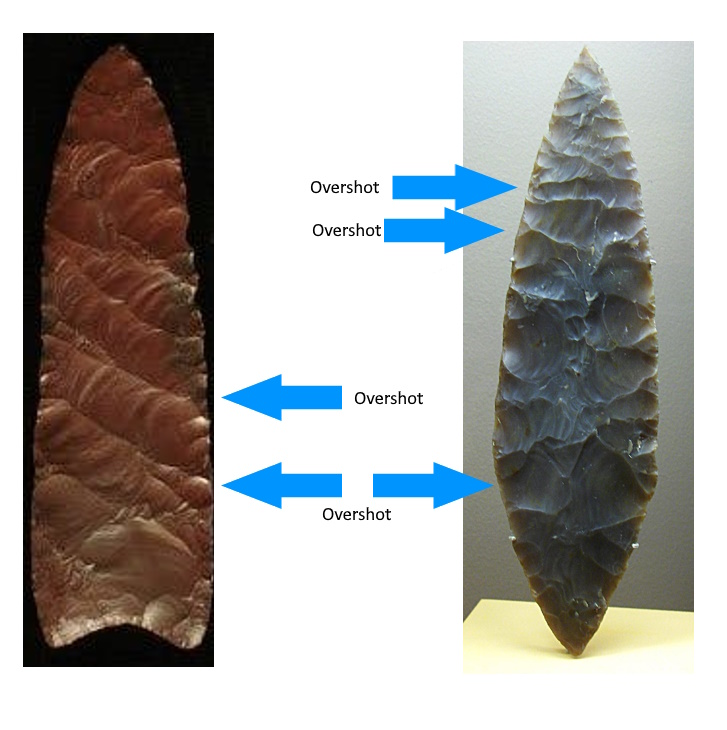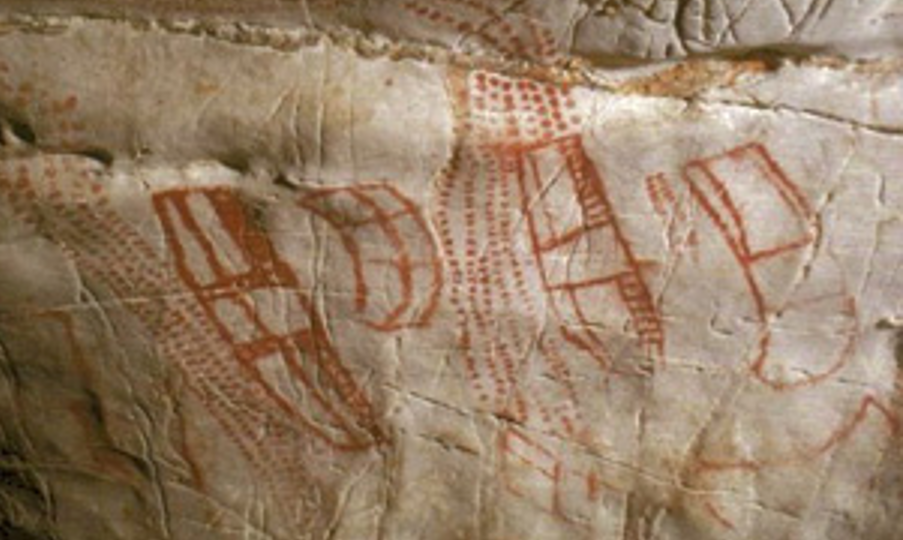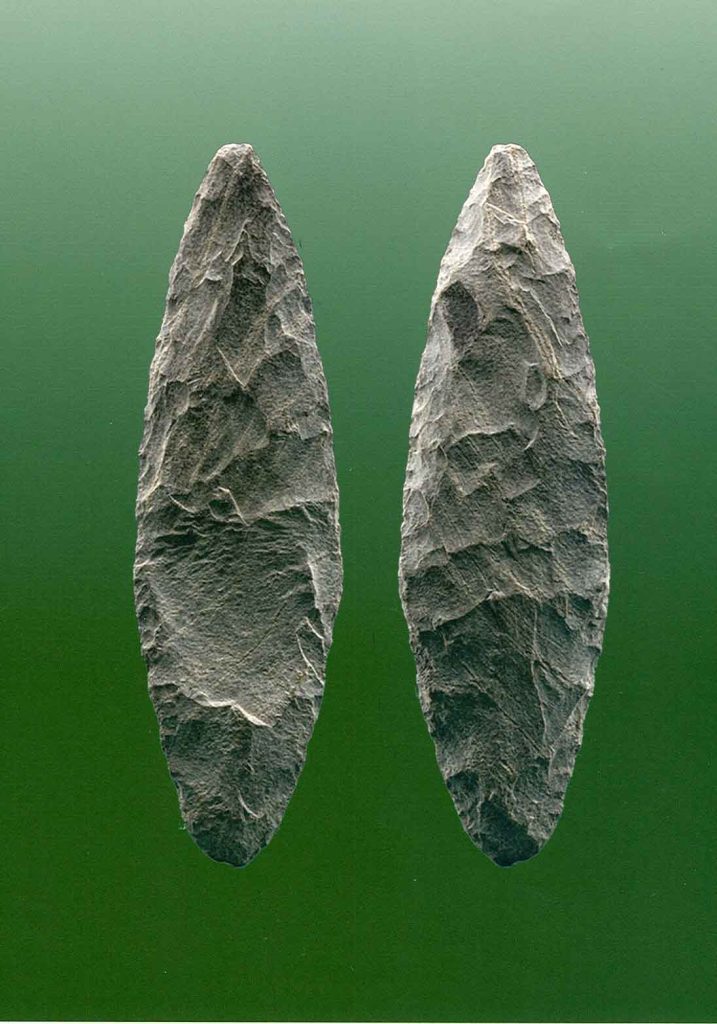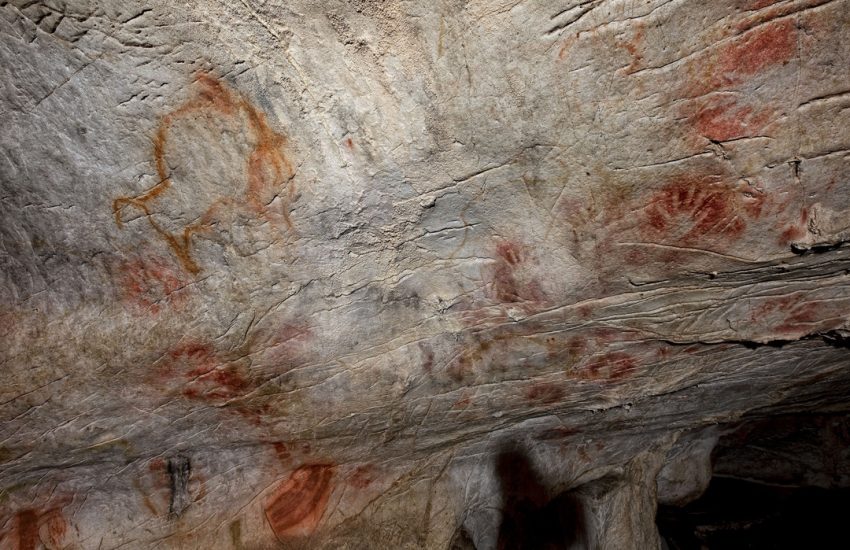Featured photo by Gabinete de Prensa del Gobierno de Cantabria, Creative Commons Attribution 3.0 Spain.
Until recently, the common theory about how North America was populated was that the first humans migrated to Alaska from North East Asia and then moved on into the plains and to the East. The theory also asserted that the Clovis culture was the Neolithic culture of these early immigrants and that the American Indians are offspring of the Clovis people and the “native” population of North America.
However, the “Bering Strait” theory, as some call it, is unable to explain certain facts.
- Why were no Clovis culture elements ever found in North East Asia?
- How come all the Clovis sites seem to be of the same age (about 13,000 years BP) when migrants from Kamchatka to Manhattan had to cover over 6,000 miles on foot?
- Why do none of the American Indian languages bear any meaningful resemblance to Asian languages (approx. 6% similar sounding words can be found in almost any language pair)?
- As a rule, complex stone tool making technology has the highest complexity where it originated and loses complexity as it is transferred. If the Clovis stone culture originated in the East, how come the Clovis stone tool technology appears to become more primitive toward the West and is more sophisticated in the East?
The Bering Strait theory does not answer these questions. And perhaps therefore, it recently (2012) got competition: the Solutrean hypothesis.
The Solutrean was a special Neolithic period that lasted from approx. 22,000 through 18,000 BP. This special culture was located in southern France and northern Spain around the Bay of Biscayne. The people who were the carriers of this culture were probably early proto-Celts. The Solutrean is characterized by three main features:
- Unique flat and thin flint blades, mainly spear heads
- The use of the unique overshot technique in producing these spear heads
- Depots, where they stored surplus stone tools
- The use of the spear thrower (the atlatl) instead of bow and arrows
The American Clovis culture shows the exact same features. Clovis spear heads are not only morphologically similar to the Solutrean spear heads. Both are unique types of stone tools that are not found anywhere else. Morphological similarity is a strong argument for a connection between two cultures but even stronger than morphological similarity counts the identity of the production process that must be followed when producing Clovis and Solutrean stone spear heads. Both Clovis and Solutrean spear heads undergo 10 production steps. Nine are completely identical. Only the last step is different: the Solutrean spear heads are tipped at the bottom, while the Clovis spear heads are fluted or flat at the bottom. And both show marks of the unique and difficult to master “overshot” technique.
This technique consists in knapping the blade from one side in order to chip off a flake on the other side that reaches from edge to edge allowing the stone tool maker to make the spear head much thinner and sharper. To my best knowledge, only two Neolithic cultures applied this technique: the Solutrean and the Clovis culture.
Below I am showing a typical Clovis and a typical Solutrean spear head with the characteristic overshot marks.

That Clovis and Solutrean spear heads apply the same exact sequence of manufacturing steps. This suggests strongly that the two cultures were genetically related and carried by the same people or ethnic group. Since the Solutrean culture precedes the Clovis culture, the Clovis culture most likely came from Europe, not from Asia.
Critics argue that the Solutrean culture in Europe ended before the Clovis culture in North America began and that there is a gap of approx. 5,000 years between them. This argument probably does not carry much water. During the last LGM (Last Glacial Maximum) of the last ice age the ice shield reached south in Europe to Bordeaux and in America to the Tennessee/Chesapeake Bay line. England and Scandinavia were completely under a miles-thick ice cover. The water level of the oceans was nearly 400 feet lower than today and the coast lines of both North America and Western Europe lay hundreds of miles further out from where they are today, leaving the entire American continental shelf as dry land and Georges Bank, Sable Island Bank, St. Pierre Bank, and the Grand Banks of Newfoundland as large Islands. The Atlantic the ice shield reached south to cover the entire northern Atlantic and huge icebergs broke off from this shield that were floating as frozen islands in the ocean.


Critics also argue that ocean currents run mostly from the West to the East, which would have made it impossible for the Solutreans to travel to America by sea, but the ocean currents were different 20,000 years ago. There was a strong current at that time, which ran from the East to the West and which would have probably carried Solutrean boats to America even without sails or oars. But critics also argue that no remains of any boats have ever been found and hence it must be doubted that the Solutreans even had ocean-going vessels. However, cave paintings in the El Castillo cave in northern Spain clearly show sizeable boats with sails, moving through water (Picture). The boats are apparently fully covered with animal skins and hence able to withstand even very high waves on the open sea. The water is shown in the painting as dotted lines.
Critics also argue that no true Solutrean spear heads have been found in America, i.e. heads with a tipped bottom. However, in 1970, the crew of a Virginian fishing vessel named “CINMAR” pulled a typical Solutrean spear head out of the Atlantic approx. 100 miles offshore (Picture) together with mastodon bones, which were dated 23,000 years BP. This means that the Solutrean and Clovis cultures did overlap. The Solutreans, pressured by ever-increasing ice and an ever-shrinking food base, sailed along the southern edge of the Atlantic ice shield, probably hopping from iceberg to iceberg for hundreds or thousands of years, living more or less like esquimoes, and reached the American coast approximately 500 miles to the East of today’s coastline. This means that the earliest remains of the migrating Solutreans are now 400 feet under water! It probably also means that the missing 5,000 years of Solutrean immigration into America and the earliest beginning of the Clovis culture will be found on the part of the American continent that is now inundated.
But critics also argue that the DNA distribution among American Indians points toward an east-Asian origin of the American Indians. There are six main so-called haplo-groups (single groups) of mitochondrial DNA prevalent among American Indians. Five of them are also found in East Asia. But one does not occur in East Asia at all. It is the xmtDNA haplo-group, a group that is only passed on through the mother. This haplo-group is found in Western and Eastern Europe, around the Mediterranean Sea and all over the Near East with its epicenter in Anatolia, Turkey. It is also found in the North American mainland all the way to the West Coast with its epicenter in the American North-East and Canada. There is one small isolated occurrence of the xmtDNA haplo-group in the Mongolian Altai Mountains, about 6,000 miles from the Bering strait and no occurrences in between.
All of these facts strongly support the hypothesis that North America was settled by Europeans at the same time when or several thousand years before the first immigrants from Asia arrived across the Bering Strait. So far, we do not have any proof of any humans living in North America before the Clovis people. So, if we consider the first invaders or immigrants the “natives” of North America, a strong argument can be made that the real natives of North America were the Solutrean proto-Celts from Europe, because they most likely got there first. And this is the core assertion of the Solutrean Hypothesis.
If we insist, though, that only true American aboriginal humans should be called “natives”, then neither those American Indians who immigrated via the Bering Strait from Asia nor those who immigrated via the Atlantic from Europe could be rightfully called “native Americans”, because they were all invaders.
Of course, like anything in science, this can change as we acquire new knowledge. Newton’s theory gave way to Einstein’s, and Einstein’s to Max Planck’s, and who knows what’s next. Perhaps there was a genuine aboriginal American “homo americanus” and we just have not found him yet. Allegedly, 14,500-year-old human bones were found in Chile. But this guy probably came from Polynesia and we are talking about North America, not South America. Marine archeology is a new and fast growing branch of archeology and we should all expect many surprises from future under-water research.
